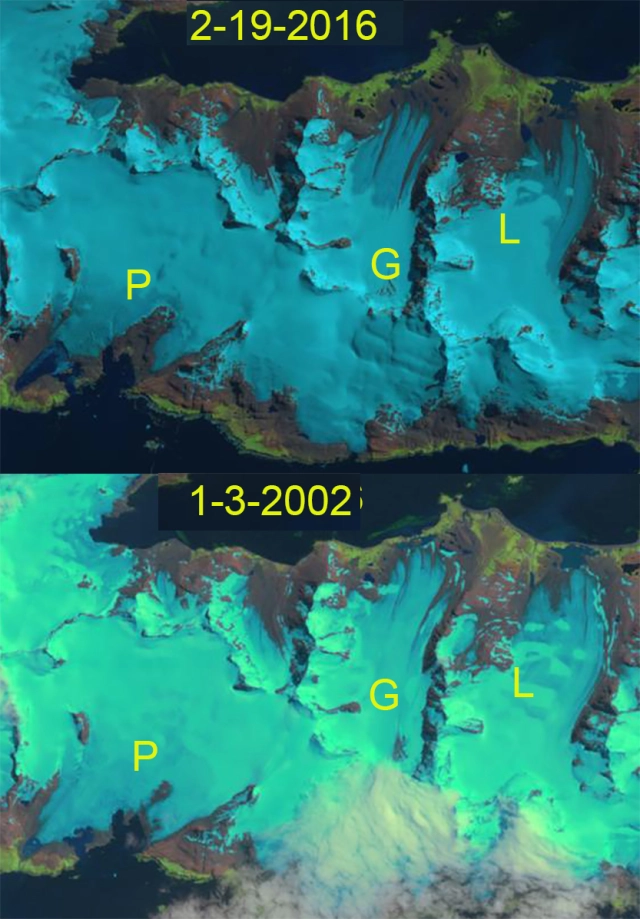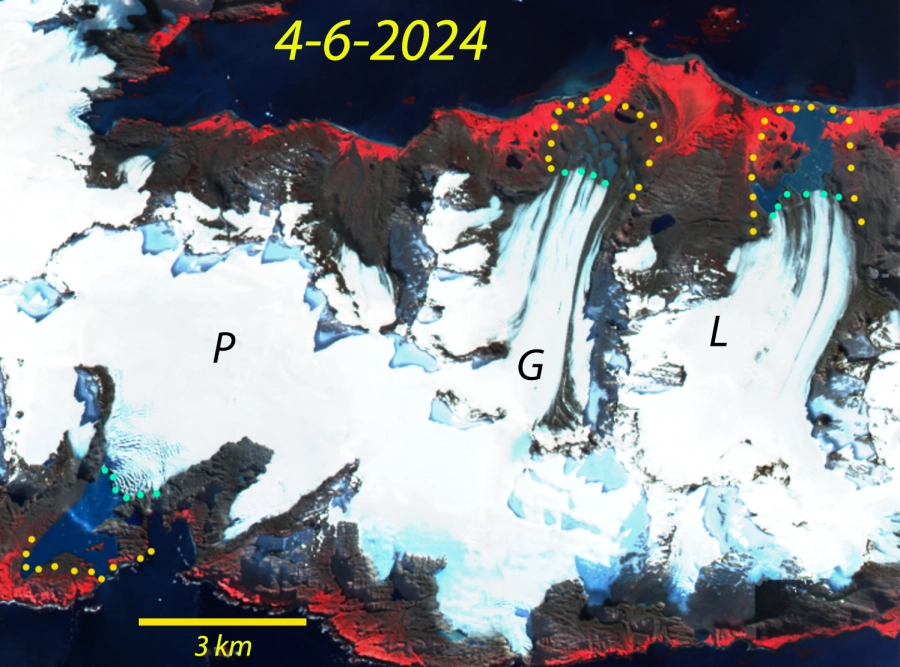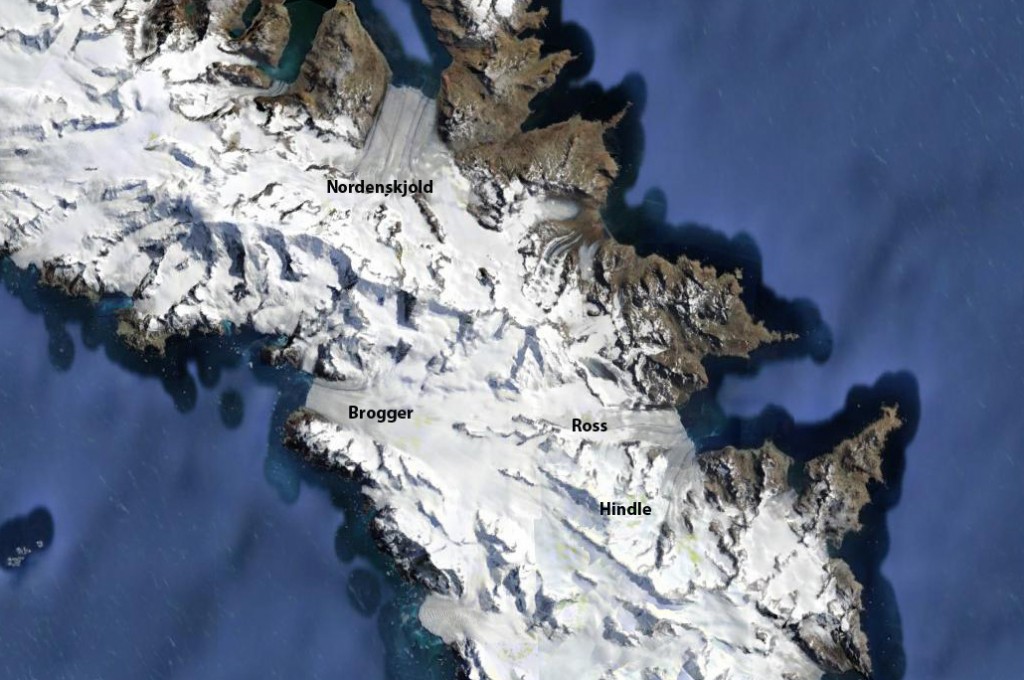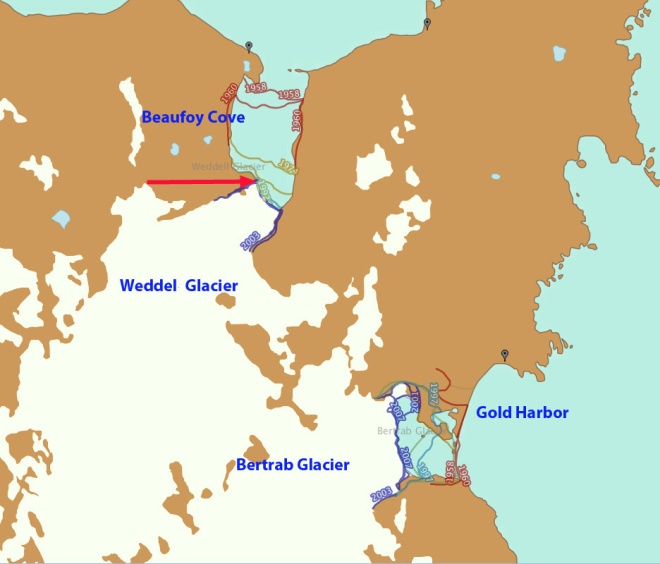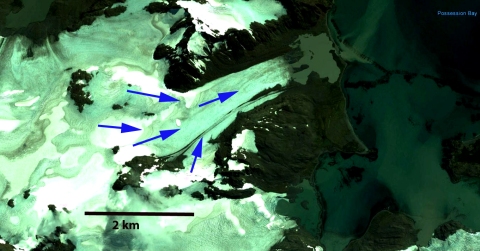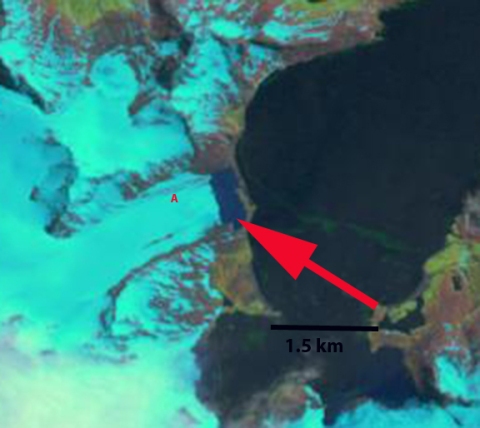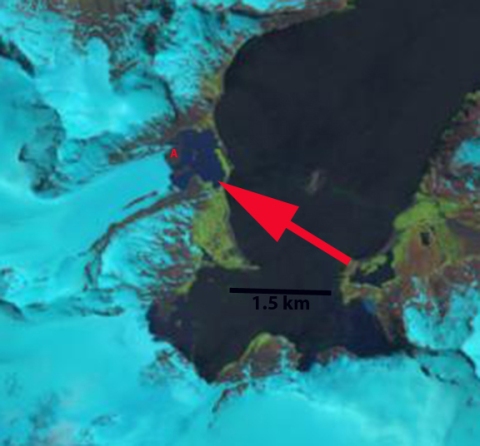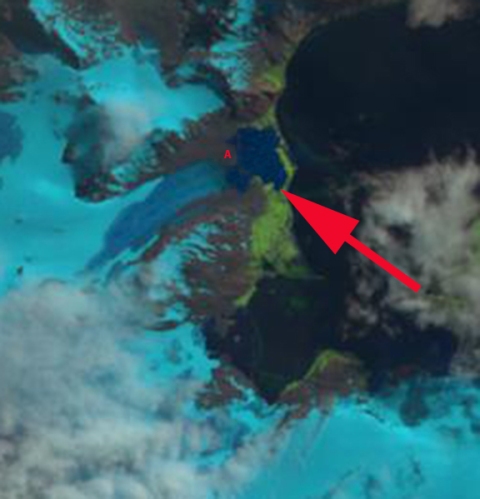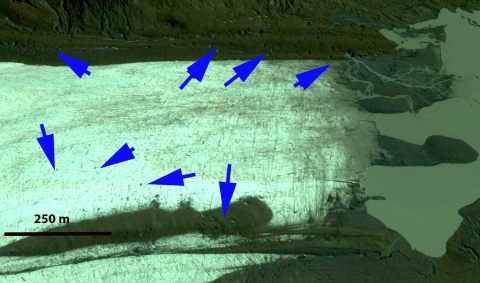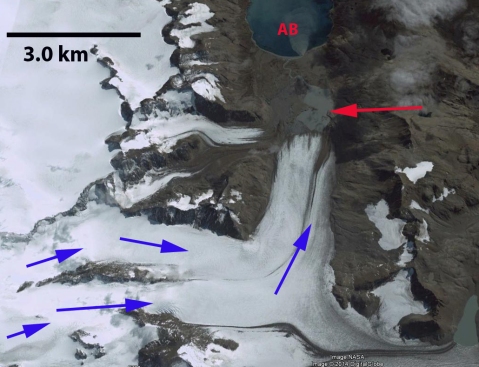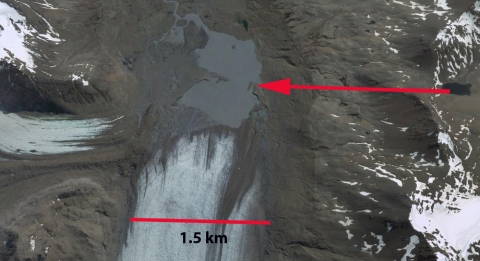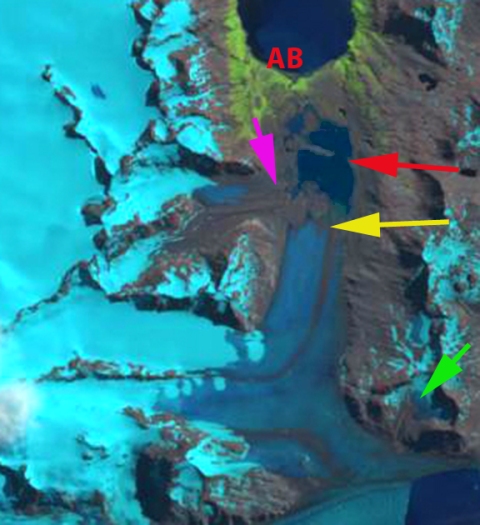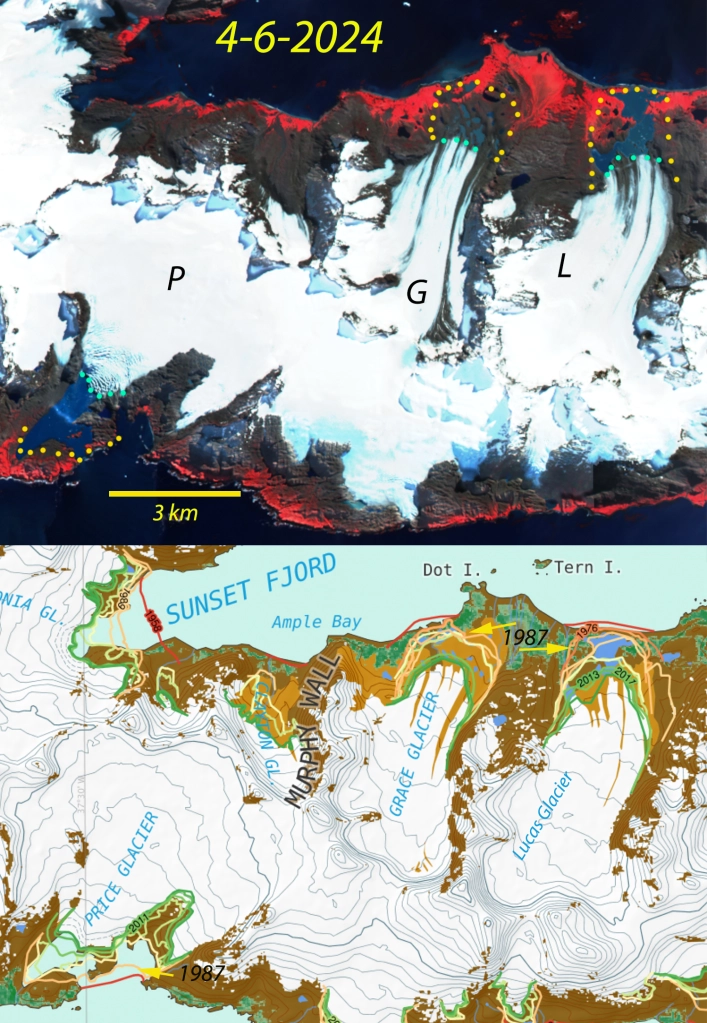
In 1987 Grace, Lucas and Price Glacier on the northern end of South Georgia Island each reached tidewater. Each had retreated less than 100 m since 1976. This is a very cloudy region and clear satellite image views limited. Here we examine Landsat images from 2000 and 2016, and a Sentinel image from 2024 to identify changes. Gordon et al., (2008) observed that larger tidewater and sea-calving valley and outlet glaciers generally remained in relatively advanced positions until the 1980’s. After 1980 most glaciers receded; many of these retreats have been dramatic including Twitcher, Herz, Ross, Hindle, Konig and Neumayer Glacier (Pelto, 2017).
By 2002 a Landsat image reveals that Grace and Lucas Glacier have retreated from the coast with new proglacial lakes forming between the terminus and the coast. Price Glacier main terminus is still filling most of a narrow bay, and the east side of the terminus is still reachig the coast. By 2016 Grace Glacier retreat has led to the formation of several small proglacial alkes, while Lucas Glacier retreat has generated one larger proglacial lake. Price Glacier has begun to retreat up a narrow embayment and the east side has almost lost connection with tidewater.
In 2024 Grace Glacier has retreated 1200 m, ~20% of its length in 1987. Lucas Glacier has retreated 1400 m, ~20% of its length. Price Glacier now only terminates in a narrow embayment ,has retreated 1700 m, ~23% of its length. Each glacier has limited area above 500 m, indicating that below this elevation glacier mass balance has been significantly negative over the last 35 years. The retreat here is similar to that of Konig and Turnback that have retreated from tidewater exposing new coastal regions that are being occupied by flora and fauna.
